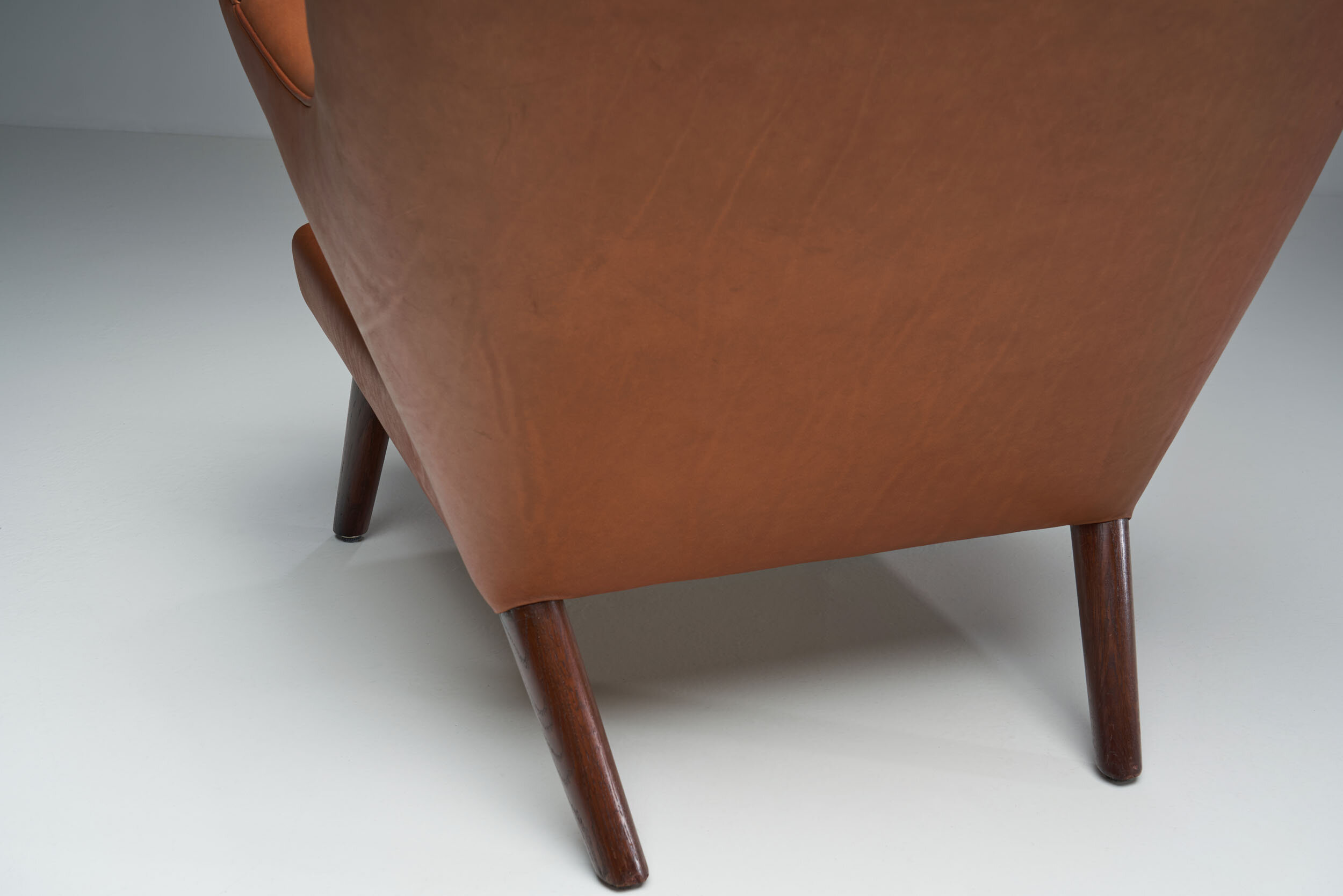Hans Wegner "Papa Bear" in Cognac Leather, Denmark 1951 (sold)














Hans Wegner "Papa Bear" in Cognac Leather, Denmark 1951 (sold)
An original “Papa Bear Chair” by Danish design master Hans Wegner designed for the Danish furniture maker A.P. Stolen in 1951. While Wegner is primarily known for his designs and inventiveness, functionality and comfort remain essential parts of his chairs. His designs have been described as 'timeless', and 'free from passing trends'. Renowned for its beautiful design and incredible comfort, the Papa Bear chair has become an icon of 20th century Danish design.
This exceptional example of Wegner's masterpiece design is in amazing condition. The upholstered Papa Bear Chair is an enveloping chair with exposed wooden armrests. It features cognac aniline leather fabric, with a matching seat cushion, teak "paws" and oak legs. The warm colours contribute to this Papa Bear chair’s comfort from the first sight. The solid wood frame is hand-joined to provide a base for the traditional upholstery. With the exception of the seat cushion, no foam is used in the upholstery; the back and armrests are stuffed with cotton, palm and flax fibre, and horse hair. The addition of springs creates a durable and immensely comfortable easy chair which embraces the sitter in a warm hug. Premium leather
The Papa Bear Chair received its name after its embracing, bear paw-like armrests. The iconic AP19 got its name from a journalist who was assigned to write a review of it. He got the feeling that the chair was embracing him from behind with its “paws”. He thereby named it the “Papa Bear Chair”. The director of A.P. Stolen, Anker Petersen took a liking to the name and the design became the mascot of the workshop.
This Papa Bear Chair is an investment for life. Danish craftsmen spend at least two weeks hand crafting each chair to the highest standards. The solid wooden frame is strongly joint and shaped to form a solid base for the comprehensive traditional upholstery work. It remains the most exclusive, and one of the most popular Wegner designs of all.
SOLD
Condition:
In very good vintage condition. Recently reupholstered in premium full aniline leather
Dimensions:
35.82 in W x 35.82 in D x 38.58 in H; Seat Height 13.38 in
91 cm W x 91 cm D x 98 cm H; Seat Height 34 cm
Exhibitions:
Model presented at the exhibition “Tidens Møbler” in Forum 1952.
Literature:
Dansk Kunsthåndværk, no. 4, April 1952, p. 62 and no. 6, Juni 1952, on advertisment pages.
Johan Møller Nielsen, “Wegner en dansk Møbelkunstner”, 1965, p. 70.
About the designer:
Hans Wegner (1914–2007) is considered as one of the most influential designers of Scandinavian design. Danish-born Wegner became a national and international design idol for shaping the history of design in the 1950s and ‘60s.
In his designs, the sharp edges defining Modernism were smoothened, creating his iconic chairs. As a pioneer of the modernist style, often described as “organic functionality”, Wegner described his method as “stripping the old chairs of their outer style and letting them appear in their pure construction.”.
At 14 years old, he began his apprenticeship with Danish master cabinet maker H. F. Stahlberg. After serving in the military he moved to Copenhagen, and attended the School of Arts and Crafts, before setting out as a furniture designer. In 1943, he established his own studio, producing designs for manufacturers like AP Stolen, Fredericia Stolefabrik, and in later years, PP Møbler.
Wegner designed more than 500 chairs in his lifetime, refining an approach that combined a variety of natural materials and pushed traditional joinery techniques to extreme tolerances and distillations. Wegner’s background as a cabinetmaker gave him a deep understanding of how to integrate exacting joinery techniques with exquisite form, realizing the perfect combination with form and purpose. Wegner is most renowned for his “Papa Bear” (1950) and “Round” chair (1949)—later known simply as “The Chair”—which starred in the 1961 presidential debates between Nixon and Kennedy.
The core of Wegner’s legacy remains his focus on showing the inner soul of furniture pieces through a simple and functional exterior. ~H.
